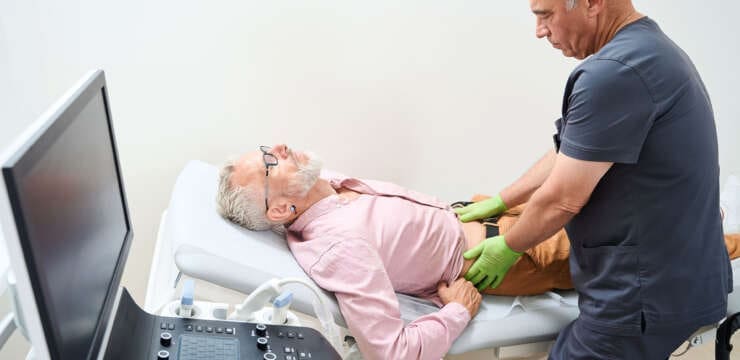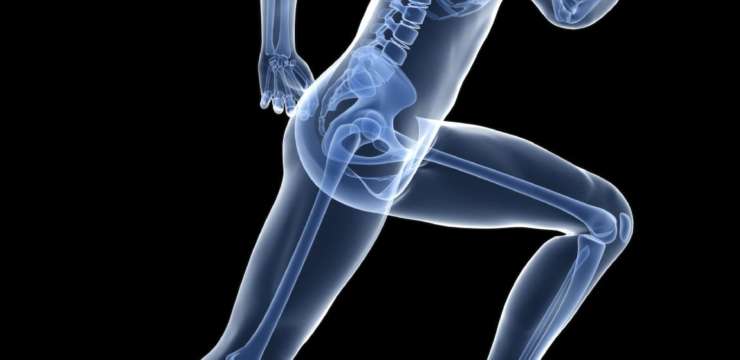
Find out how auto accidents can trigger chronic inflammation and what you can do to manage your health afterward.
Table of Contents
Introduction
Picture this: you’re driving along, humming to your favorite tune, when—bam!—another car decides to turn your peaceful ride into a scene from an action movie. Your head snaps back and forth like a bobblehead in a windstorm, and suddenly, your neck feels like it’s auditioning for the role of “most painful part of your body.” Welcome to the world of cervical spinal pain from motor vehicle accidents (MVAs), where the stakes are high, but the solutions don’t have to involve a scalpel. With a touch of Gomez Addams’ flair for the dramatic, let’s dive into the science, symptoms, and solutions for this all-too-common issue, spotlighting the expertise of Dr. Alexander Jimenez, El Paso’s spine-saving superhero.
In this guide, we’ll explore why MVAs wreak havoc on your neck, what injuries you might face, and how non-surgical treatments, including anti-inflammatory diets, can help you recover. We’ll also highlight Dr. Jimenez’s unique role in personal injury cases, where his advanced diagnostics bridge the gap between medical care and legal justice. So, buckle up—figuratively, of course—and let’s get to the bottom of this neck-pain mystery.
1. Clinical Rationale for Cervical Spinal Pain from MVAs
Why does a car crash leave your neck feeling like it’s been through a medieval jousting match? The answer lies in the biomechanics of whiplash, the most common cause of cervical spinal pain in MVAs. Whiplash happens when your head is suddenly jerked forward and backward, stretching and sometimes tearing the delicate muscles, ligaments, and tendons in your neck. It’s like your cervical spine is trying to perform an impromptu gymnastics routine without any training.
Research from the Journal of Orthopaedic & Sports Physical Therapy explains that “head and spinal injuries commonly occur during motor vehicle crashes (MVCs)” due to the complex forces at play (Mechanisms and Mitigation). These forces can lead to a range of injuries, from mild sprains to severe disc herniations or fractures. Even low-speed collisions can cause trouble, with a study noting that 15% of crash victims seeking hospital care have soft tissue cervical injuries (Soft Tissue Injuries).
The cervical spine, made up of seven vertebrae (C1–C7), is designed for flexibility, not for withstanding sudden, violent movements. When an MVA occurs, the rapid acceleration and deceleration can overwhelm this delicate structure, leading to inflammation and pain. This is especially true for women, restrained car occupants, and those aged 40–49, who are more likely to experience these injuries. In severe cases, the spinal cord itself can be affected, resulting in neurological symptoms such as numbness or weakness.
Table 1: Common Causes and Risk Factors for Cervical Spinal Pain in MVAs
| Factor | Details |
|---|---|
| Mechanism | Whiplash from rapid head movement, flexion, extension, or rotation forces. |
| Common Injuries | Sprains, strains, disc herniations, fractures, and spinal cord injuries. |
| Risk Groups | Females, restrained occupants, ages 40–49, drivers/passengers (C3–C7). |
| Impact Severity | Even low-speed collisions can cause significant damage to soft tissue. |
2. Musculoskeletal Injuries and Neck Pain
So, what exactly happens to your neck when it’s caught in the chaos of an MVA? The cervical spine is a marvel of engineering, supporting your head while protecting the spinal cord. But when it’s subjected to the forces of a crash, things can go awry. The most common injuries include:
- Sprains and Strains: Overstretched or torn ligaments and muscles, causing pain and stiffness.
- Disc Injuries: Bulging or herniated discs that press on nerves, leading to radiating pain.
- Fractures: Cracked or broken vertebrae, often in the C3–C7 region for drivers and passengers.
- Spinal Cord Injuries: Rare but severe, potentially causing tetraplegia or paraplegia.
Symptoms can be immediate or sneak up on you like a mischievous gremlin. You might feel neck pain, stiffness, or headaches right away, but as Alexander Orthopaedics notes, “delayed neck pain after a car accident is common, and symptoms may take two to four weeks to appear” (Common Neck Injuries). Other signs include dizziness, tingling in the arms, fatigue, or even nausea. Inflammation plays a big role, as damaged tissues release chemicals that cause swelling and pain.
Early diagnosis is critical. Left untreated, these injuries can lead to chronic pain or disability. Imaging, like X-rays, CT scans, or MRIs, can reveal the extent of damage, guiding treatment plans. In El Paso, practitioners like Dr. Jimenez use advanced diagnostics to pinpoint injuries, ensuring patients get the right care from the start.
The Healing Diet: Combat Inflammation, Embrace Wellness- Video
3. Non-Surgical Treatments for Neck Pain
Now, let’s talk about fixing that neck pain without resorting to surgery, because who wants to trade their neck brace for a hospital gown? Non-surgical treatments are the heroes of this story, offering relief through natural, holistic methods. Here’s a look at the key players:
- Chiropractic Care: Adjustments to realign the spine and reduce pressure on nerves. Dr. Jimenez’s clinic emphasizes “ALL NATURAL treatment plans, no prescriptions,” focusing on functional medicine and nutritional wellness (Health Coach Clinic).
- Physical Therapy: Exercises to strengthen neck muscles and improve range of motion.
- Anti-Inflammatory Diets and Supplements: Foods such as turmeric, ginger, and omega-3 fatty acids can help reduce inflammation. Research supports their role in pain management (Anti-inflammatory Diets).
- Lifestyle Changes: Stress management, detox programs, and proper posture can prevent further injury.
Dr. Jimenez’s approach is like a well-choreographed dance, combining chiropractic adjustments with dietary advice to address the root cause of pain. For example, incorporating anti-inflammatory foods can help reduce swelling in damaged tissues, speeding up recovery. His blog highlights specific strategies for cervical spine recovery, noting the importance of addressing inflammation early (Cervical Spine Recovery).
Table 2: Anti-Inflammatory Foods and Supplements for Neck Pain
| Food/Supplement | Benefits | Examples |
|---|---|---|
| Turmeric | Contains curcumin, which reduces inflammation | Add to soups, smoothies |
| Ginger | Anti-inflammatory, pain relief | Tea, stir-fries |
| Omega-3s | Reduces swelling, supports tissue repair | Fish oil, salmon, and walnuts |
| Vitamin D | Supports bone health, reduces pain | Supplements, fortified foods |
4. Role of Chiropractors in Personal Injury Cases
When you’re injured in an MVA, it’s not just your neck that takes a hit—your life can feel like it’s been turned upside down. That’s where chiropractors like Dr. Jimenez step in, not just as healers but as key players in personal injury cases. Chiropractors provide detailed documentation of injuries, treatments, and progress, which is crucial for insurance claims and legal proceedings. As Dominguez Injury Centers explains, “Chiropractors can provide detailed medical reports documenting their clients’ injuries, treatments, and progress,” and may testify as expert witnesses (Chiropractors in Personal Injury).
Dr. Jimenez’s dual training as a chiropractor and nurse practitioner gives him a unique edge. He uses advanced imaging (like X-rays and MRIs) and diagnostic evaluations to assess injuries, ensuring accurate documentation for legal purposes. His clinic’s focus on functional medicine means patients get comprehensive care that supports both recovery and legal claims. This documentation can make or break a case, proving the link between the accident and your injuries.
5. Personal Injury Cases in El Paso and Dr. Jimenez’s Expertise
El Paso’s busy roads witness their fair share of motor vehicle accidents (MVAs), making specialized care for personal injury victims essential. Dr. Alexander Jimenez, with over 30 years of experience, is a standout in this field. His clinic, Injury Medical Clinic, specializes in treating neck and back pain, sciatica, and other injuries related to motor vehicle accidents (MVA) (El Paso Back Clinic). His blog provides insights into managing cervical spine injuries, including ligamentous damage and chronic neck pain (Ligamentous Injuries).
Dr. Jimenez’s ability to connect medical findings with legal documentation is unparalleled. He utilizes advanced imaging and dual-scope procedures to provide clear evidence of injuries, enabling attorneys to build strong cases. His role as a liaison ensures that patients receive both top-notch medical care and the support needed for fair compensation. In El Paso, where personal injury cases are common, his expertise is a lifeline for victims seeking justice and recovery.
6. Conclusion
Cervical spinal pain from MVAs is no laughing matter, despite our lighthearted approach to the topic. It’s a complex issue that can disrupt your life, but with the right care, recovery is within reach. Non-surgical treatments, such as chiropractic care, physical therapy, and anti-inflammatory diets, offer effective solutions. Meanwhile, experts like Dr. Alexander Jimenez provide the medical and legal support necessary to navigate personal injury cases. In El Paso, his clinic stands as a beacon of hope for those dealing with the aftermath of a crash.
Disclaimer: This guide is for informational purposes only and should not be taken as medical advice. Always consult a qualified healthcare professional for diagnosis and treatment. If you’ve been in an MVA, don’t wait—seek care and legal advice to protect your health and rights.
Key Citations:
- Mechanisms and Mitigation of Head and Spinal Injuries Due to Motor Vehicle Crashes
- Soft tissue cervical spinal injuries in motor vehicle accidents
- Common Neck Injuries After a Car Accident
- Cervical Injury
- Health Coach Clinic
- The Vital Role of Chiropractors in Personal Injury Cases
- Auto Injuries: Recovery and Care for the Cervical Spine
- El Paso Back Clinic
- Ligamentous Injuries: Management Tips for Chronic Neck Pain
Disclaimers
Professional Scope of Practice *
The information herein on "Auto Accident: Signs and Remedies for Chronic Inflammation" is not intended to replace a one-on-one relationship with a qualified health care professional or licensed physician and is not medical advice. We encourage you to make healthcare decisions based on your research and partnership with a qualified healthcare professional.
Blog Information & Scope Discussions
Welcome to El Paso's wellness blog, where Dr. Alex Jimenez, DC, FNP-C, a board-certified Family Practice Nurse Practitioner (FNP-C) and Chiropractor (DC), presents insights on how our team is dedicated to holistic healing and personalized care. Our practice aligns with evidence-based treatment protocols inspired by integrative medicine principles, similar to those found on dralexjimenez.com, focusing on restoring health naturally for patients of all ages.
Our areas of chiropractic practice include Wellness & Nutrition, Chronic Pain, Personal Injury, Auto Accident Care, Work Injuries, Back Injury, Low Back Pain, Neck Pain, Migraine Headaches, Sports Injuries, Severe Sciatica, Scoliosis, Complex Herniated Discs, Fibromyalgia, Chronic Pain, Complex Injuries, Stress Management, Functional Medicine Treatments, and in-scope care protocols.
Our information scope is limited to chiropractic, musculoskeletal, physical medicine, wellness, contributing etiological viscerosomatic disturbances within clinical presentations, associated somato-visceral reflex clinical dynamics, subluxation complexes, sensitive health issues, and functional medicine articles, topics, and discussions.
We provide and present clinical collaboration with specialists from various disciplines. Each specialist is governed by their professional scope of practice and their jurisdiction of licensure. We use functional health & wellness protocols to treat and support care for the injuries or disorders of the musculoskeletal system.
Our videos, posts, topics, subjects, and insights cover clinical matters, issues, and topics that relate to and directly or indirectly support our clinical scope of practice.*
Our office has reasonably attempted to provide supportive citations and has identified the relevant research studies or studies supporting our posts. We provide copies of supporting research studies available to regulatory boards and the public upon request.
We understand that we cover matters that require an additional explanation of how they may assist in a particular care plan or treatment protocol; therefore, to discuss the subject matter above further, please feel free to ask Dr. Alex Jimenez, DC, APRN, FNP-BC, or contact us at 915-850-0900.
We are here to help you and your family.
Blessings
Dr. Alex Jimenez DC, MSACP, APRN, FNP-BC*, CCST, IFMCP, CFMP, ATN
email: coach@elpasofunctionalmedicine.com
Licensed as a Doctor of Chiropractic (DC) in Texas & New Mexico*
Texas DC License # TX5807
New Mexico DC License # NM-DC2182
Licensed as a Registered Nurse (RN*) in Texas & Multistate
Texas RN License # 1191402
ANCC FNP-BC: Board Certified Nurse Practitioner*
Compact Status: Multi-State License: Authorized to Practice in 40 States*
Graduate with Honors: ICHS: MSN-FNP (Family Nurse Practitioner Program)
Degree Granted. Master's in Family Practice MSN Diploma (Cum Laude)
Dr. Alex Jimenez, DC, APRN, FNP-BC*, CFMP, IFMCP, ATN, CCST
My Digital Business Card






